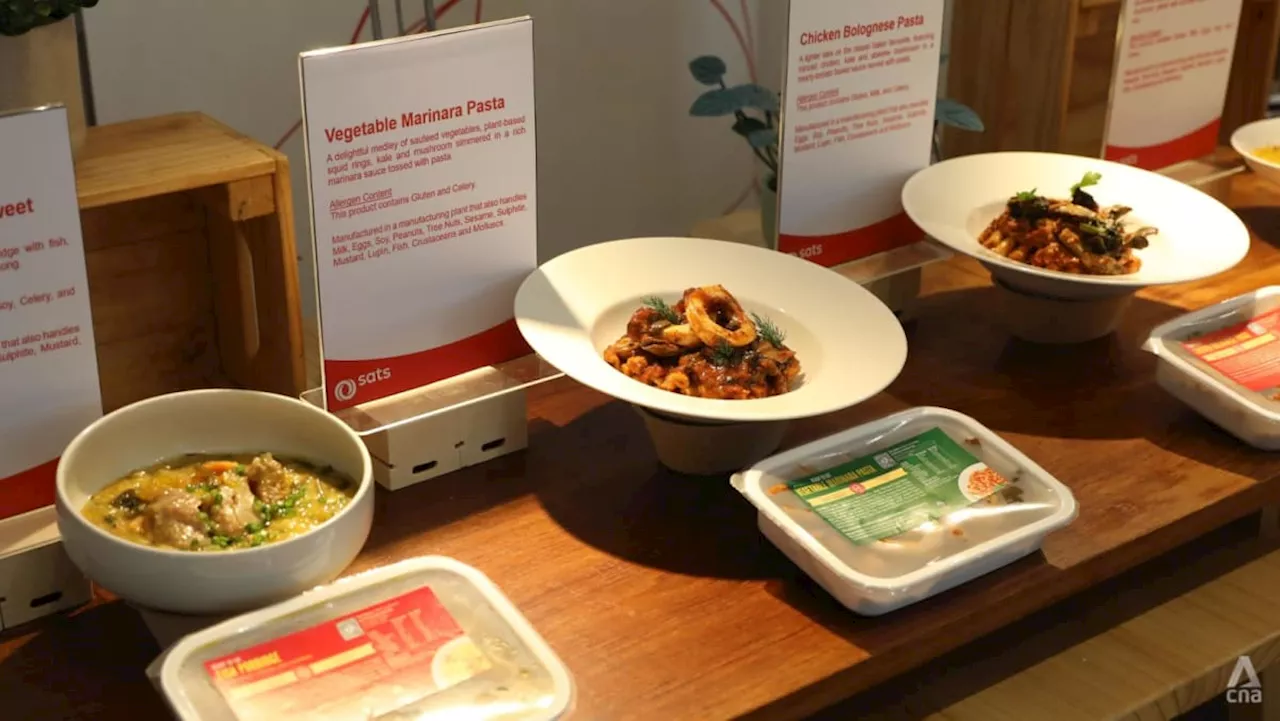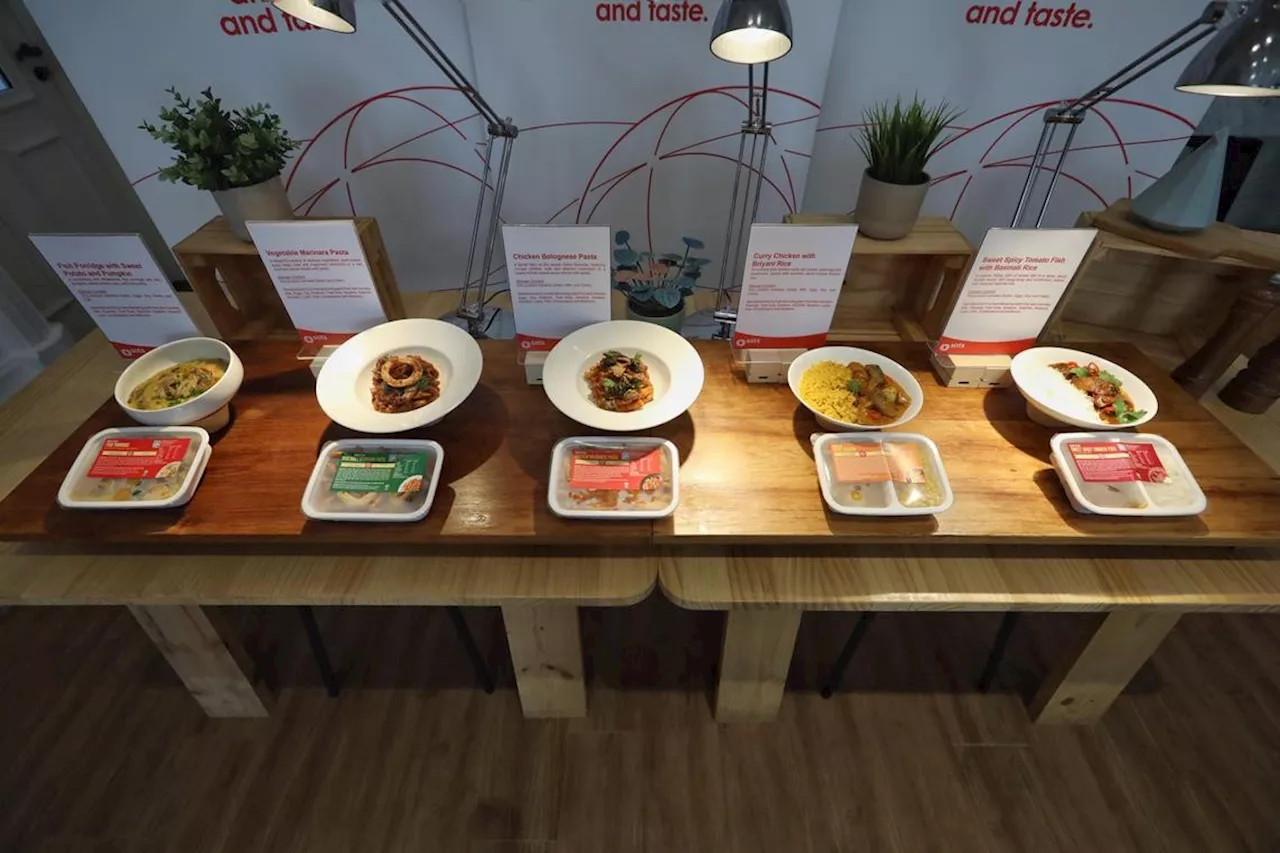Singaporean students at the School of the Arts (Sota) have reportedly experienced food poisoning symptoms after consuming ready-to-eat (RTE) meals distributed as part of a national preparedness exercise. Investigations are underway to determine the cause of the illness and identify any potential contamination. Authorities are taking precautionary measures, including replacing meals from the same batch and reinforcing food safety practices.
Some students of the School of the Arts (Sota) in Singapore have experienced food poisoning symptoms after consuming ready-to-eat (RTE) meals distributed as part of the Total Defence activities. On February 19, Sota announced that they had received feedback regarding students falling ill after eating the meals and were investigating the incident with relevant authorities. As a precautionary measure, students with uneaten RTE meals were urged to return them.
Sota's vice-principal, Ann Tan, also advised students who experienced discomfort after consuming the meals, distributed during Sota's food resilience preparedness programme on February 18, to seek medical attention. \In a joint statement, the Singapore Food Agency (SFA), Ministry of Education (MOE), Ministry of Health, and food solutions provider Sats, which produced the meals, confirmed they were investigating the gastroenteritis cases reported at Sota. As of February 19, 20 students reported experiencing symptoms, which constituted about 1 percent of the Sota students who had consumed the meals. One student, 16-year-old Lim, reported experiencing diarrhoea a day after consuming two boxes of chicken bolognese pasta. Another student, who remained anonymous, reported having a stomach ache hours after eating a box of curry chicken briyani. \The joint statement also stated that SFA and MOE are collaborating with participating schools to implement additional precautionary measures, including replacing RTE meals from the same batch. Preliminary findings suggest that the gastroenteritis cases are isolated to Sota, with no reported incidents at other participating venues. SFA and MOE emphasized their commitment to working with participating schools to reinforce food safety practices, such as identifying compromised food packaging or signs of deterioration, and promoting good personal hygiene when consuming RTE meals, including thorough hand washing before eating. Sats had previously stated that the halal-certified meals, which included options like curry chicken with briyani rice, fish porridge with sweet potato and pumpkin, and vegetable marinara pasta, were developed using advanced techniques similar to those employed for Singapore Armed Forces combat rations. These meals, part of Exercise SG Ready, a national preparedness exercise, were intended to be distributed to schools and active ageing facilities across Singapore between February 15 and 28.\Exercise SG Ready, in its second iteration for 2025, focused on strengthening food resilience amidst simulated power outages. Over 100,000 students and teachers from more than 90 schools and three ITE colleges, along with approximately 8,000 senior citizens, have received or were scheduled to receive these meals. Sats had assured that the RTE meals were sterilized during preparation and kept in individual sealed boxes that had undergone leak testing before distribution. They were stored at room temperature in cool, shaded conditions
FOOD POISONING RTE MEALS SINGAPORE SCHOOLS EXERCISE SG READY SATS SFA MOE TOTAL DEFENCE
Singapore Latest News, Singapore Headlines
Similar News:You can also read news stories similar to this one that we have collected from other news sources.
 SOTA students get food poisoning after consuming ready-to-eat meals in Total Defence exerciseThese meals are being distributed to students and teachers from over 90 schools this year.
SOTA students get food poisoning after consuming ready-to-eat meals in Total Defence exerciseThese meals are being distributed to students and teachers from over 90 schools this year.
Read more »
 Food Poisoning Symptoms Reported After RTE Meals Distribution in Singapore SchoolsReady-to-eat (RTE) meals distributed to Singapore schools as part of Exercise SG Ready, a national preparedness exercise, have been linked to food poisoning symptoms in some School of the Arts (Sota) students. Authorities are investigating the incident and implementing precautionary measures to ensure the safety of participants.
Food Poisoning Symptoms Reported After RTE Meals Distribution in Singapore SchoolsReady-to-eat (RTE) meals distributed to Singapore schools as part of Exercise SG Ready, a national preparedness exercise, have been linked to food poisoning symptoms in some School of the Arts (Sota) students. Authorities are investigating the incident and implementing precautionary measures to ensure the safety of participants.
Read more »
 Rat Concerns at Beauty World Food Centre Prompt Action by Singapore AuthoritiesFollowing inspections revealing signs of rat infestation, Singapore authorities have issued warnings to stallholders at the Beauty World Food Centre. The Singapore Food Agency (SFA) and the National Environment Agency (NEA) are urging stallholders to implement stricter hygiene practices, such as storing food in rat-proof containers, managing waste properly, and maintaining clean stalls. The NEA is also taking enforcement action against the building management and managing agent to enhance pest control measures.
Rat Concerns at Beauty World Food Centre Prompt Action by Singapore AuthoritiesFollowing inspections revealing signs of rat infestation, Singapore authorities have issued warnings to stallholders at the Beauty World Food Centre. The Singapore Food Agency (SFA) and the National Environment Agency (NEA) are urging stallholders to implement stricter hygiene practices, such as storing food in rat-proof containers, managing waste properly, and maintaining clean stalls. The NEA is also taking enforcement action against the building management and managing agent to enhance pest control measures.
Read more »
 Beauty World Food Centre Faces Rat Infestation ConcernsSingapore authorities have issued warnings to stallholders at Beauty World Food Centre following the discovery of a suspected rodent infestation. The National Environment Agency (NEA) and the Singapore Food Agency (SFA) have urged stallholders to improve hygiene and food safety practices to prevent further issues.
Beauty World Food Centre Faces Rat Infestation ConcernsSingapore authorities have issued warnings to stallholders at Beauty World Food Centre following the discovery of a suspected rodent infestation. The National Environment Agency (NEA) and the Singapore Food Agency (SFA) have urged stallholders to improve hygiene and food safety practices to prevent further issues.
Read more »
 Singapore Food Centre Faces Rat Infestation Concerns, Authorities Urge Hygiene MeasuresSingapore's Beauty World Food Centre is grappling with a suspected rat infestation, prompting immediate action from the National Environment Agency (NEA) and the Singapore Food Agency (SFA). The agencies have issued a joint statement, urging stallholders to prioritize hygiene and food safety practices to prevent further rodent activity.
Singapore Food Centre Faces Rat Infestation Concerns, Authorities Urge Hygiene MeasuresSingapore's Beauty World Food Centre is grappling with a suspected rat infestation, prompting immediate action from the National Environment Agency (NEA) and the Singapore Food Agency (SFA). The agencies have issued a joint statement, urging stallholders to prioritize hygiene and food safety practices to prevent further rodent activity.
Read more »
 Indonesia Appoints Army General to Lead Food Procurement Company, Raising ConcernsThe appointment of Major General Novi Helmy Prasetya to head Bulog, Indonesia's state logistics company, has sparked debate about the increasing military influence under President Prabowo Subianto. Critics argue that this move violates military law and poses a threat to democracy, while supporters view it as a strategic step towards achieving food self-sufficiency.
Indonesia Appoints Army General to Lead Food Procurement Company, Raising ConcernsThe appointment of Major General Novi Helmy Prasetya to head Bulog, Indonesia's state logistics company, has sparked debate about the increasing military influence under President Prabowo Subianto. Critics argue that this move violates military law and poses a threat to democracy, while supporters view it as a strategic step towards achieving food self-sufficiency.
Read more »
